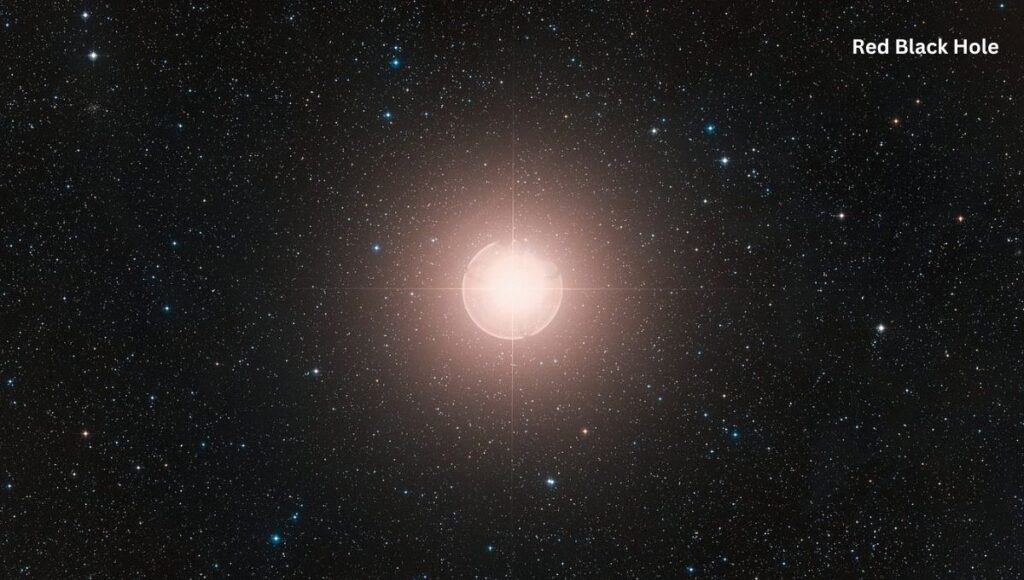Utilizing data from the James Webb Space Telescope (JWST), astronomers have made a remarkable discovery: a supermassive black hole, emitting an “extremely red” hue, is thriving in the obscure depths of the early universe.
The distinctive crimson tint of this supermassive black hole observed roughly 700 million years post-Big Bang, is attributed to the universe’s expansion. As the universe stretches outward, light en route to us undergoes a “redshift,” indicating the presence of dense gas and dust enveloping the black hole.

By scrutinizing JWST data, a team of astronomers led by Lukas Furtak and Adi Zitrin from Ben-Gurion University of the Negev managed to gauge the mass of this colossal black hole. At approximately 40 million times the mass of our sun, it dwarfs its galactic host, showcasing an unexpectedly substantial presence.
Furthermore, the researchers found evidence of rapid accretion activity around this supermassive black hole, situated some 12.9 billion light-years away from Earth. In simpler terms, it’s actively consuming its surrounding gas and dust, fueling its growth.
“We were deeply fascinated by the preliminary data obtained from JWST. While sifting through the UNCOVER program data, we noticed three distinct, compact entities with a vivid red hue, immediately hinting at a quasar-like nature,” remarked Furtak.
More must-reads:
- Exclusive: Peacemaker & Janet Cage Join Mortal Kombat 1! Click Now for the First Gameplay Trailer!
- Don’t Miss Out: EasySMX T37 Switch Controller Now Only $19.99!
- Legendary Pokémon Battles Await in Pokémon Scarlet & Violet!
- Extraterrestrial Life Clue Unveiled! Water Found on Asteroids, Revolutionizing Search Beyond Earth
- Bo: Path of the Teal Lotus – Your Mythic Adventure Begins July 18th, 2024!
Quasars, such as this one, arise from the intense gravitational pull of supermassive black holes surrounded by copious matter, forming an accretion disk. This disk, as it spirals inward, generates immense heat and luminosity, resulting in the characteristic brilliance of quasars.
Moreover, the gravitational influence of these supermassive black holes propels matter into highly energetic jets, emitting bright electromagnetic radiation, a phenomenon observed in active galactic nuclei (AGN).
The substantial radiation emitted from this particular supermassive black hole renders it appear like a pinpoint in JWST observations. “Analysis of its spectral characteristics indicated a deviation from typical star-forming galaxies, reinforcing the hypothesis of a supermassive black hole,” explained Rachel Bezanson from the University of Pittsburgh, co-lead of the UNCOVER program.
To detect this early quasar, the JWST utilized a phenomenon predicted by Einstein’s theory of general relativity: gravitational lensing. This effect, wherein massive objects bend the trajectory of light, was leveraged by the gravitational pull of a galaxy cluster named Abell 2744, amplifying the light from background galaxies, including the extremely red quasar under scrutiny.
“Our customized lensing model, designed specifically for the galaxy cluster, confirmed that the trio of red dots represented multiple images of a single celestial source, observed during the universe’s early stages, just 700 million years old,” noted Zitrin.